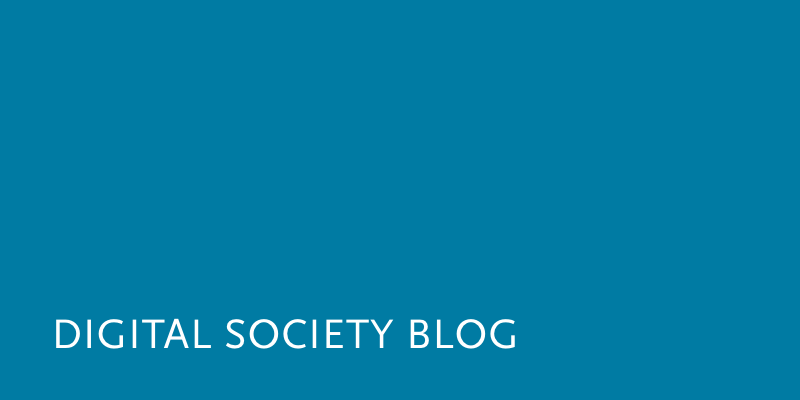Making sense of our connected world

Demonstrate and Disobey
In February 2014 I had the chance to be a visiting scholar at the Berkeley Center for New Media at UC Berkeley. As a finishing touch to these exciting weeks, I had the opportunity to organize a roundtable discussion for the RightsCon, a conference on the Internet and Human Rights that took place in San Francisco. Titled “Demonstrate and Disobey: Protest and Civil Disobedience On and Offline”, the discussion focused on a topic that does not give room for much optimism, especially in the context of surveillance revelations and judicial proceedings in hacktivism cases.
That being said, the goal of the session was not only to better understand the challenges various forms of protest face today, but also to develop ideas for countermeasures and to bring together those people who are already experimenting with them. Together with Joana Varon from the Center for Technology and Society in Rio de Janeiro, we discussed some of the main difficulties protest movements on the streets and on the Internet are facing today. Since my research is concerned with digital civil disobedience, my own focus was on digital protest, especially the kind that puts the law to the test.

Among the invited participants were Burak Arikan, a Turkish artist and activist, and Geoffrey King, who enriched the roundtable with his perspective as a photojournalist. For many years he documented protest scenes all around the world. He studied constitutional law and is a watchdog for Freedom of the Press. Our third speaker, Hanni Fakoury from the Electronic Frontier Foundation, is specialized in IT criminal law, data protection and freedom of expression.
The debate was brought to life through an open discussion among all participants. Each proposed solution which emerged was documented. From 13 proposals, we distinguished four types of solutions:
1. Visibility, knowledge and transparency:
A good example of this approach is a project called “Networks of Dispossession” by Burak Arikan. In this project, he visualizes lobbying efforts graphically by a collaborative network analysis of linkages between contractors and the Turkish government. Movements are only as strong as their arguments, and therefore need comprehensible evidence. Another participant added: Where a lack of transparency exists, it is all about the courage to restore it.
2. Tools and techniques:
Technical tools were discussed as a supporting solution. They can, for example, help activists as well as ordinary citizens to encrypt their communication. Since lots of good tools already exist, the task for the next months and years is to spread and improve them. A development deficit exists in the area of effective and legitimate tools for digital protest. Between ineffectual Slacktivism and criminal practices such as defacements and DDoS actions, options for dissent and protest in the digital domain are missing.
3. Legislative level:
A major concern of Hanni Fakoury is the disproportion in the punishment of civil disobedience on the internet. The Electronic Frontier Foundation therefore proposes a fundamental revision of the Computer Fraud and Abuse Act. The American government is not the only one who is struggling with the understanding of new forms of protest. Fortunately, the developments in the case Barret Brown give some hope for a positive development in the adaptation of the legislation.
4. Public debate:
Ultimately, the public debate on protest as well as new practices of civil disobedience plays an important role, since the addressees are citizens as well as governments. Therefore, the discussion should not be limited to academics and researchers around the world; it is important to establish a broader public debate. In a similar vein, it will be important to develop not only technologies, but to convey and ease their use.
I want to thank the guests and participants of this roundtable, and I hope that the discussion has inspired them to start new initiatives, or encouraged them to proceed in the work the already do.
This post is part of a weekly series of articles by doctoral canditates of the Alexander von Humboldt Institute for Internet and Society. It does not necessarily represent the view of the Institute itself. For more information about the topics of these articles and asssociated research projects, please contact presse@hiig.de.
This post represents the view of the author and does not necessarily represent the view of the institute itself. For more information about the topics of these articles and associated research projects, please contact info@hiig.de.

You will receive our latest blog articles once a month in a newsletter.
Research issues in focus
Inside content moderation: Humans, machines and invisible work
Content moderation combines human labour and algorithmic systems, exposing global inequalities in who controls what we see online.
Beyond Big Tech: National strategies for platform alternatives
China, Russia and India are building national platform alternatives to reduce their dependence on Big Tech. What can Europe learn from their strategies?
Counting without accountability? An analysis of the DSA’s transparency reports
Are the DSA's transparency reports really holding platforms accountable? A critical analyses of reports from major platforms reveals gaps and raises doubts.




